*This post may have affiliate links, which means I may receive commissions if you choose to purchase through links I provide (at no extra cost to you). As an Amazon Associate I earn from qualifying purchases. Please read my disclaimer for additional details..
Bees are an all-important part of our ecosystem.
Besides being the sole producers of the honey, they are arguably the most important of pollinators.
Without them, many natural systems may fall out of balance.
Bees are tiny, winged animals. You will likely find them in flowers, on tree branches, or other cool places.
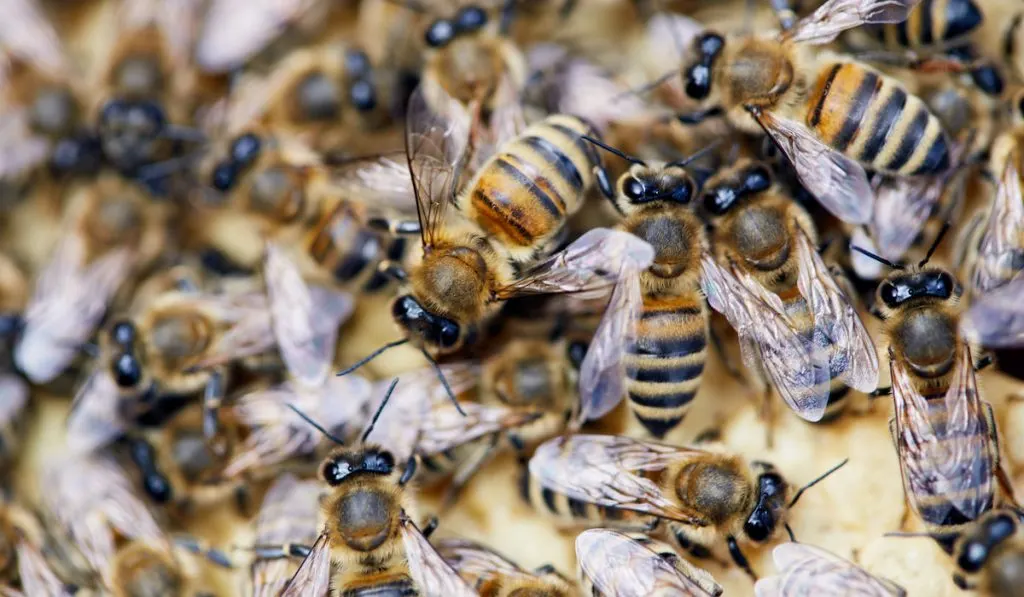
Bees are also famous for their stingers and the pain that they can cause.
In this article, we discuss why bees sting and what happens to them after they use their stinger.
We will also examine different types of bees that sting and a few that, surprisingly, do not.
Table of Contents
Why Bees Sting
Bees sting when they sense a threat or attack from external forces. Believing that it or any other bee is in danger is enough of a reason for a bee to sting.
These insects are sensitive to their environment. Just like humans protect their homes from harm, bees can sting to safeguard their colony from attack.
They may also sting as a form of response to an attack on any member of their colony. For bees, an attack on one is an attack on all.
Do not think you can interfere with the pollen sources of a bee and go unharmed. A bee can sting at any time if it senses an interference with its food. To avoid being stung, avoid not just the bees but also their habitats.
What Happens When A Bee Stings
A bee sting is characterized by the release of apitoxin through its stinger.
Apitoxin is a venom containing protein substances that affect the immune system and skin, leading to instantaneous pain.
This can cause many reactions ranging from temporary pain to a severe allergic reaction.
However, not everyone will get the same effect every time a bee stings.
The temporary reaction comes with an instant sharp burning pain, redness, and swelling around that part of the skin.
This mild reaction usually disappears within a few hours.
There could be a more severe reaction where the swelling lasts for more hours or days, accompanied by extreme redness.
Anaphylaxis is the worst reaction that can occur from a bee sting. This reaction can be life threatening and require emergency medical services.
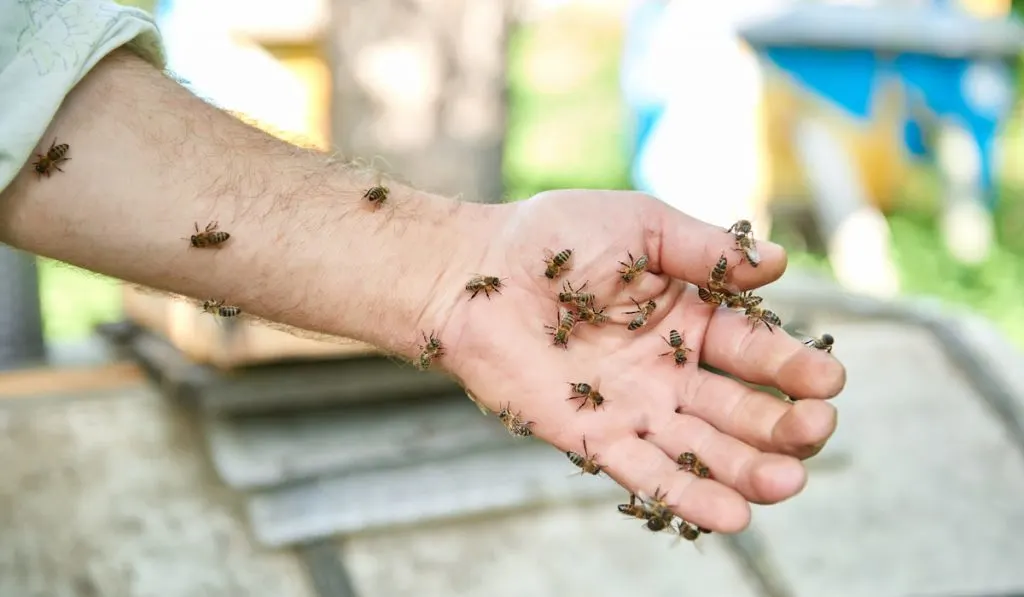
Furthermore, multiple bee stings leading to the accumulation of venom in the human body can be of greater damage.
Children, older individuals, and people with heart or lung issues are susceptible to more risk when stung multiple times.
Why Bee Stings Hurt So Much
Apitoxin contains multiple protein substances. Of the many peptides in apitoxin, a substance called melittin is the most abundant.
When a bee releases its venom, melittin sets off pain receptors in the body.
The consequence of this is that the one who has been stung will feel pain.
The structure of the bee stinger contributes to the pain as well. Bee stingers are jagged.
When a bee stings, the stinger pierces roughly through the skin and digs deeper, injecting more venom as it goes.
Do Bees Die When They Sting You?
When a bee stings, the bee stinger burrows deep into the body of its victim.
However, the barbed stinger has tiny hooks pointing in opposite directions. This makes it difficult to detach from its victim’s skin.
When the bee is pulls away, its stinger is often ripped off and left behind in the victim. This can also pull off (or out) other vital body parts from the bee.
This is a severe injury to the bee, and it cannot survive for long after having part of it’s body removed.
Bees die after stinging because the process of stinging strips them of their stinger as well as their digestive tract, muscular, and nervous systems.
A bee can survive after stinging, but this is very unusual.
This only happens if the victim’s skin is not thick, so the bee may get its stinger out while still intact with its body.
Since human beings have thick skin, stinging a person usually means death for the bee.
But if a bee stings an insect with a thin body texture, there is a possibility of the bee surviving the attack.
Comparing Types of Bees
| Type of Bee | Likelihood of Stinging | Death after Stinging |
| Honey bee | Low | Yes |
| Africanized honey bee | High | Yes |
| Carpenter bee | Low | No |
| Bumblebee | Low | No |
| Male bees | None | No |
| Meliponine bees | None | No |
5 Types of Bees That Sting
Without a doubt, a common feature of bees is the sting. Most bees can sting, but you’ll find that their predisposition to sting varies.
Female Honey Bees
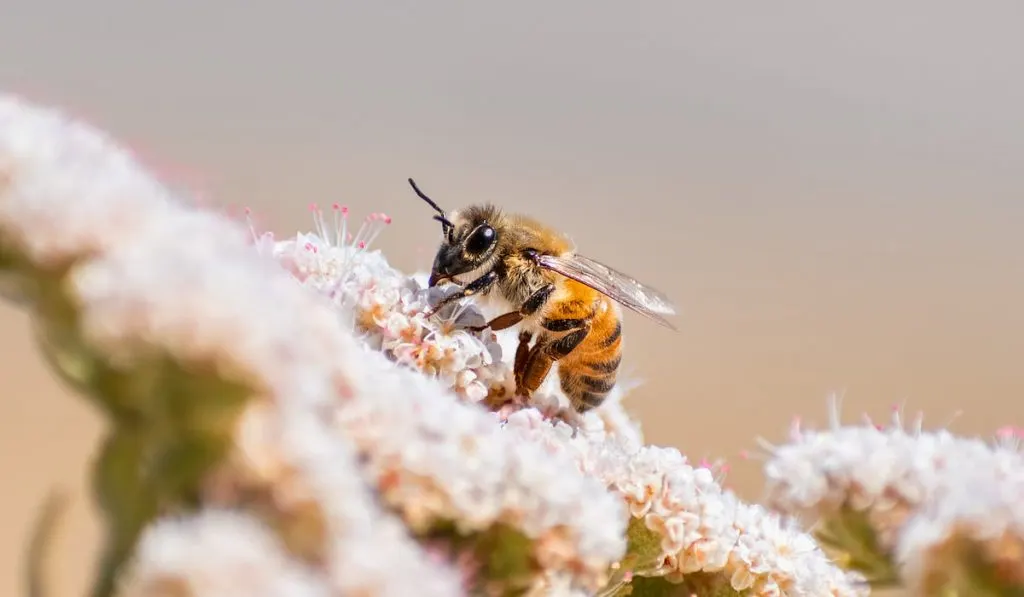
Honey bees sting mostly as a form of protection when they believe that they are under attack.
Honey bees lose their stinger in their victims’ bodies, which causes the abdomen to rupture, leading to death after stinging.
Honey bees can grow very large. Hence, their nests usually lead to the destruction of the structures they decide to camp in.
Female Bumblebees
These are black and yellow-haired bees that appear in warmer months to seek food in the form of pollen or flower nectar.
Bumblebees have little interest in stinging, and only attack when they think they are under attack or mistreated.
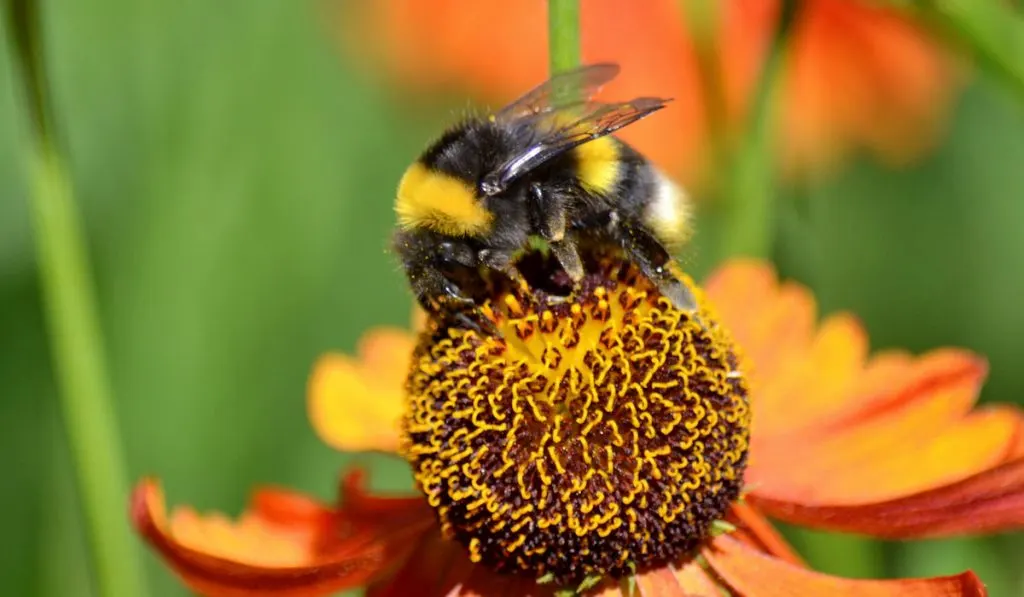
These bees have their nests in the ground amongst grasses, compost piles, or woodpiles.
The females of this bee – the Queens and workers – possess stingers. The male bees (drones), however, do not sting.
Female Carpenter Bees
These bees are majorly solitary, seeking pollen to feed their young ones. Some carpenter bees make their nests in natural habitats while others prefer man-made structures.
Female carpenter bees might sting if they are attacked, startled, or stepped on, but the males do not have stingers.
This type of bee is a slightly docile one, and they are the least aggressive kind of bees.
Africanized Honey Bees
Africanized honey bees, otherwise called killer bees, are a hybrid.
The parents of these unique species are the subspecies of the European honey bees and an African bee.
Africanized honey bees are very aggressive and defensive of their nest. They can send a signal that brings forth thousands of other bees when they sense an attack.
As such, the possibility of being stung by just one Africanized honey bee is very low.
Though the venom of an Africanized Honey bee is not more potent than that of a regular honey bee, you are likelier to get multiple stings which causes more damage.
Neon Cuckoo Bees
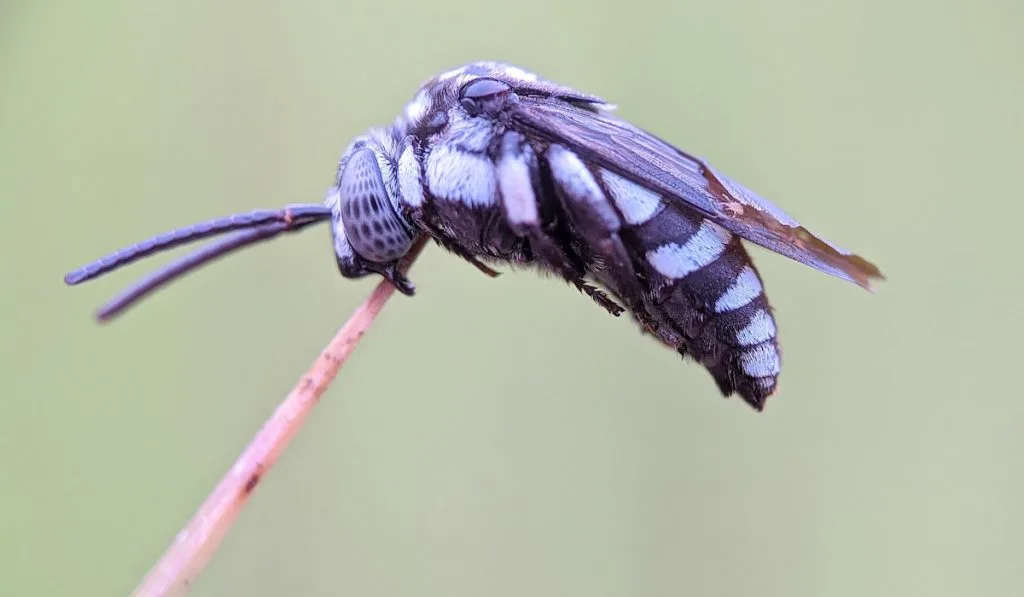
Neon cuckoo bees are parasitic bees with a unique metallic-blue sheen. They are around the same size as the European Honey Bee, and they also sting.
3 Types of Bees That Do Not Sting
You may be surprised to learn that there exist bees that do not sting.
There are actually several types worth noting.
Stingless or Meliponine Bees
Stingless bees, otherwise called Meliponine bees, are essential to the ecological system because they produce honey.
Though with stingers, the female species cannot launch an attack on a victim because they are small and weak.
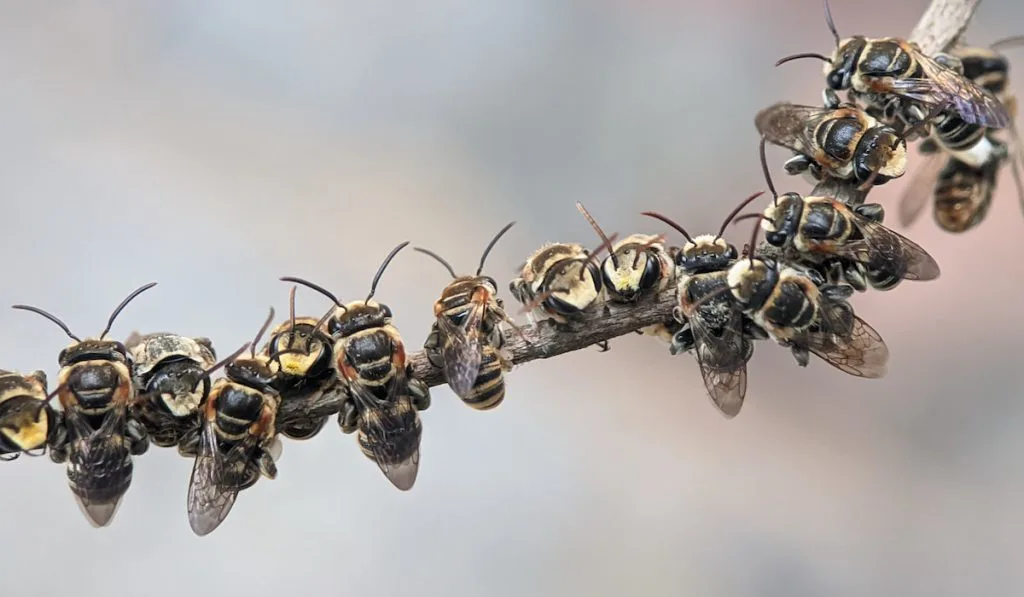
Male Bumblebees
Male bumblebees do not sting. Unlike females, male bees can be more territorial or aggressive, but they do not possess stingers.
Male Carpenter Bees

Like male bumblebees, male carpenter bees do not sting. They may also show some territoriality, but they do not have a stinger to inflict damage.
Resources
- https://growtherainbow.com/blogs/news/why-do-honey-bees-sting-do-bee-stings-hurt#
- https://www.wonderopolis.org/wonder/why-do-bees-sting
- https://www.forbes.com/sites/quora/2015/11/16/how-and-why-honey-bees-make-the-ultimate-sacrifice-when-they-sting-you/?sh=5726f2456346
- https://earthsky.org/earth/why-do-bees-die-after-they-sting-you
- https://www.mayoclinic.org/diseases-conditions/bee-stings/symptoms-causes/syc-20353869
- https://www.healthline.com/health/outdoor-health/home-remedies-for-bee-stings#_noHeaderPrefixedContent
- https://www.westernexterminator.com/bees/types-of-bees/
- https://www.orkin.com/stinging-pests/bees/bee-stings
- https://animals.mom.com/there-kind-bee-doesnt-sting-10377.html
- https://www.livescience.com/32566-why-do-bee-stings-hurt-so-bad.html
- https://arovingiwillgo.wordpress.com/2016/05/22/neon-cuckoo-bee/
